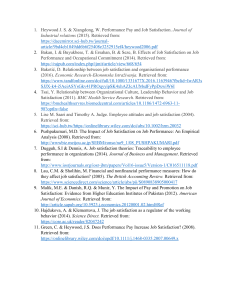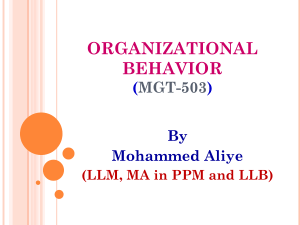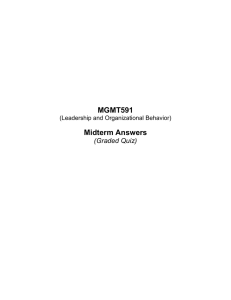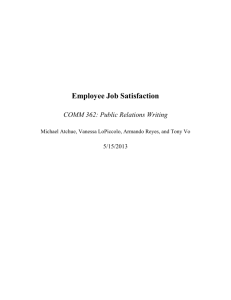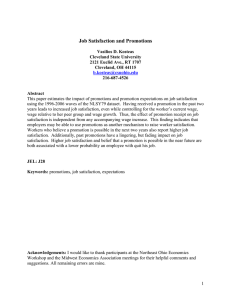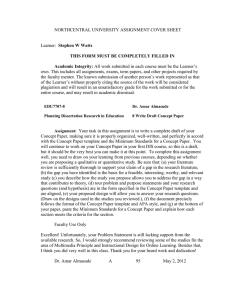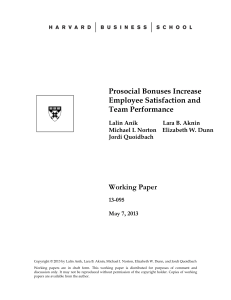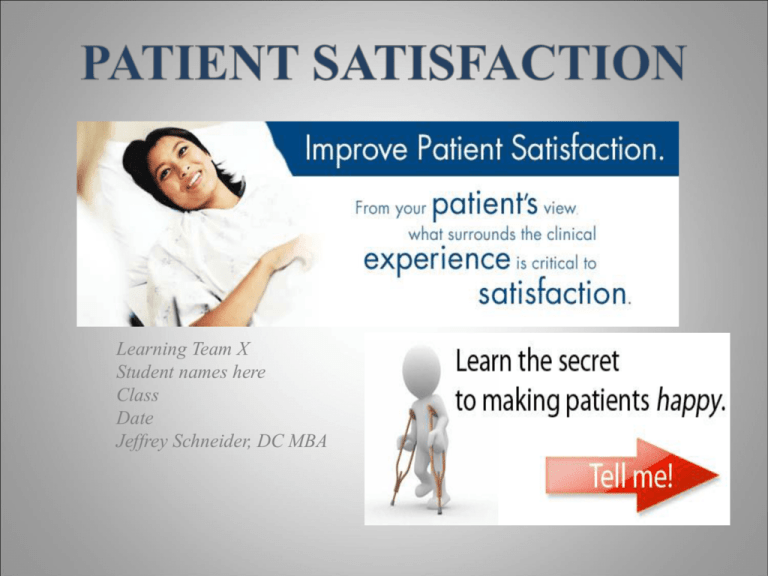
Learning Team X
Student names here
Class
Date
Jeffrey Schneider, DC MBA
The goal of the organization is to keep
our current business and grow 10%
through improved patient
satisfaction.
• Patients will experience personalized care
• Patients will understand the level of care
through effective communication
• Staff turnover will be reduced
• Patient Satisfaction Surveys
• Staff input
• Managers will assist the unit when
they are short staffed.
• Managers will perform walk through
for cleanliness.
• Staff education for phone etiquette
• Staff education through role playing
• Open discussion at staff meetings
• Performance appraisals yearly
• Report of survey results quarterly
Organizational and Individual Barriers
(Foram, 2011, para. 1)
• Lack of change agents
• Lack of staff involvement
• Poor leadership
• Fear of the unknown
• Real or perceived stress
• Loss of ‘Personal Comfort Zones’
• Organizational Culture
• Diversity
• Participation
• Values
(Victor Vroom’s VIE Theory)
…expressed as M = V x I x E…
M= motivation; V= valence; I= instrumentality; E= expectancy
Motivation depends on:
1. Personal desired outcome.
2. Achievement of success as a stepping stone
for another goal.
3. Meet the required standards.
“a person evaluates his or her outcomes and
inputs by comparing them with those of others”
(J. Stacy Adams).
Other’s Inputs
My Inputs
(education, experience, age, etc.)
(education, experience, age, etc.)
=
My Outcomes
Other’s Outcomes
(salary, promotions, bonuses, etc.)
(salary, promotions, bonuses, etc.)
The extended Expectancy theory incorporated with Equity theory
to reflect the relationship of an employee’ s performance to job
satisfaction.
Start by setting a goal, then obtain goal commitment, and finally
provide support elements.
Based on B.F. Skinner’s operant conditioning. Positive rewards
foster employees’ good behavior whereas negative consequence
halts it.
Questions
Conclusion
• Improve patient satisfaction
• Identifying what needs changing
• Removing the barriers
• Motivational theory approach to change
References
•
Borkowski, N. (2005). Organizational Behavior in Health Care. Sudbury, MA: Jones and Bartlett
Publishers. Retrieved from
https://ecampus.phoenix.edu/content/eBookLibrary2/content/DownloadList.aspx?assetMetaId=ccc02a0bcd14-405f-bfaf-9eb868489c84&assetDataId=11228125-20b9-4576-a95b-c72b49f7e4f9
•
Connaughton, M.J., & Hassinger, J. (2007, October). Leadership character: Antidote to organizational
fatigue. The Journal of Nursing Administration, 37(10), 464-470.
•
Foram, S. (2011). Organizational barriers to change. Retrieved from http://hubpages.com/hub/Barriers-toChange
•
Marsee, J. (2002). 10 Steps for implementing change. Retrieved from
http://www.virginia.edu/processsimplification/resources/Implementing%20Change.pdf
•
Spector, B. (2010). Implementing organizational change: Theory into practice (2nd ed.). Upper Saddle
River, NJ: Pearson Prentice Hall.



